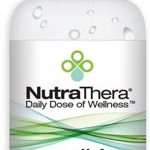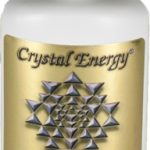When it comes to the danger of being contaminated by toxic (or ‘heavy’) metals, it’s easy to sound like a doom-monger; frankly, though, that’s a risk worth taking – because blithely exposing yourself to such dangerous substances most definitely isn’t.
The truth is, whether we like it or not, many everyday items contain toxic metal at low levels. They can be found in what we eat and drink, as well as the air we breathe (thus, they enter the body through consuming food and drinks, inhaling air and via skin and eye contact). It’s true that our bodies actually require a very small amount of ‘trace metals’ (iron and copper, for instance), but it’s very easy to consume and absorb too much; it’s all too easy because we require so very little.
And, once they’ve found their way into the human body, toxic metals do their harmful work by generating a cell-based process known as oxidative stress, aiding the development of a range of illnesses and diseases. Here are some of the toxic ‘heavy’ metals to be wary of (to say the least):
- Aluminium – a very common metal, occurring in the construction of a lot of the world around us, aluminium is found in antacids, cans, cookware, foil, nasal spray and even processed cheese; absorbed into the body, it collects in the kidneys, lungs, liver, thyroid and the brain and exposure to it in vapour form is common in mining and welding work, all of which has led to ongoing research into whether there’s any connection between brain-accumulated aluminium and Alzheimer’s and Parkinson’s disease1
- Cadmium – exposure even to low levels of this metal are dangerous, occurring usually via contaminated foods, nickel-cadmium batteries, fertiliser, hazardous waste sites and cigarettes2; slow in its ejection from the body, this in part is why cadmium can reap great harm to the brain, eyes, kidneys and the cardiovascular and reproductive systems
- Lead – fair dos, it’s been drummed into us how toxic lead is thanks to the illnesses so many people have endured thanks to lead piping, while contaminated drinking water, ageing buildings, tobacco smoke and lead dust and flakes from some paints have caused public health crises over the years; depositing itself in bones, soft tissue and the brain, lead is especially hazardous to the liver, kidneys and reproductive and nervous systems3
- Mercury – again, famed for its enormous toxicity (and featuring in thermometers), mercury may also crop up in dental fillings and tainted food, as well as some seafood; taking root in the blood, brain, kidneys, liver, spleen and fatty tissues, it’s toxic at any level, however small, and can dangerously affect the nervous system (major muscular spasms and possibly death), while even less dramatically, it can cause memory loss and reduced spatial reasoning4 and possibly Alzheimer’s disease and dementia5.
Protection and cleansing
If you’ve any concerns you may be suffering from toxic metal contamination (however major or minor), then tests can be conducted via analysis of your blood, hair or urine. It’s probably worth your while to be cautious of certain products too; without doubt, check the ingredients of antiperspirants you buy and when using cookware, utensils and cans that contain aluminium.
As you’ll have no doubt gathered by now, entirely avoiding exposure to toxic metals is pretty much impossible, which is why taking matters into your own hands may sound appealing; detoxifying your body of these harmful entities through cleansing is a great way to approach toxic metal reduction. Do take a look at our website – the following toxic metal cleanse supplements are all available through us at The Finchley Clinic:
OREA – a natural whole-body toxin cleanser, which aids the removal of the likes of lead, mercury, arsenic, biotoxins and solvents.
Green Magma (Barley Grass Powder) – a certified organic extract of young Green Barley juice, which may aid detoxification, improve digestion and increase energy.
Crystal Energy – works to enclose heavy metals and harmful toxins in order to help their removal from the body.
References:
1. Davenward S., Bentham P., Wright J., Crome P., Job D., Polwart A. and Exley C. ‘Silicon-rich mineral water as a non-invasive test of the ‘aluminum hypothesis’ in Alzheimer’s disease’. Journal of Alzheimer’s Disease. 2013; 33 (2): 423-30.
2. Cejchanová M., Wranová K., Spevácková V., Krsková A., Smíd J. and Cerná M. ‘Human bio-monitoring study–toxic elements in blood of women’. Cent Eur J Public Health. Jun 2012; 20 (2): 139-43.
3. Flora G., Gupta D. and Tiwari A. ‘Toxicity of lead: A review with recent updates’. Interdiscip Toxicol. Jun 2012; 5 (2): 47-58.
4. Katamanova E. V., Shevchenko O. I., Lakhman O. L. and Denisova I. A. ‘Cognitive disorders in patients with chronic mercury intoxication’. Med Tr Prom Ekol. 2014; (4): 7-12.
5. Cave M., Appana S., Patel M., Falkner K. C., McClain C. J. and Brock G. ‘Polychlorinated biphenyls, lead, and mercury are associated with liver disease in American adults’. Environ Health Perspect. Dec 2010. 118 (12): 1735-42.



